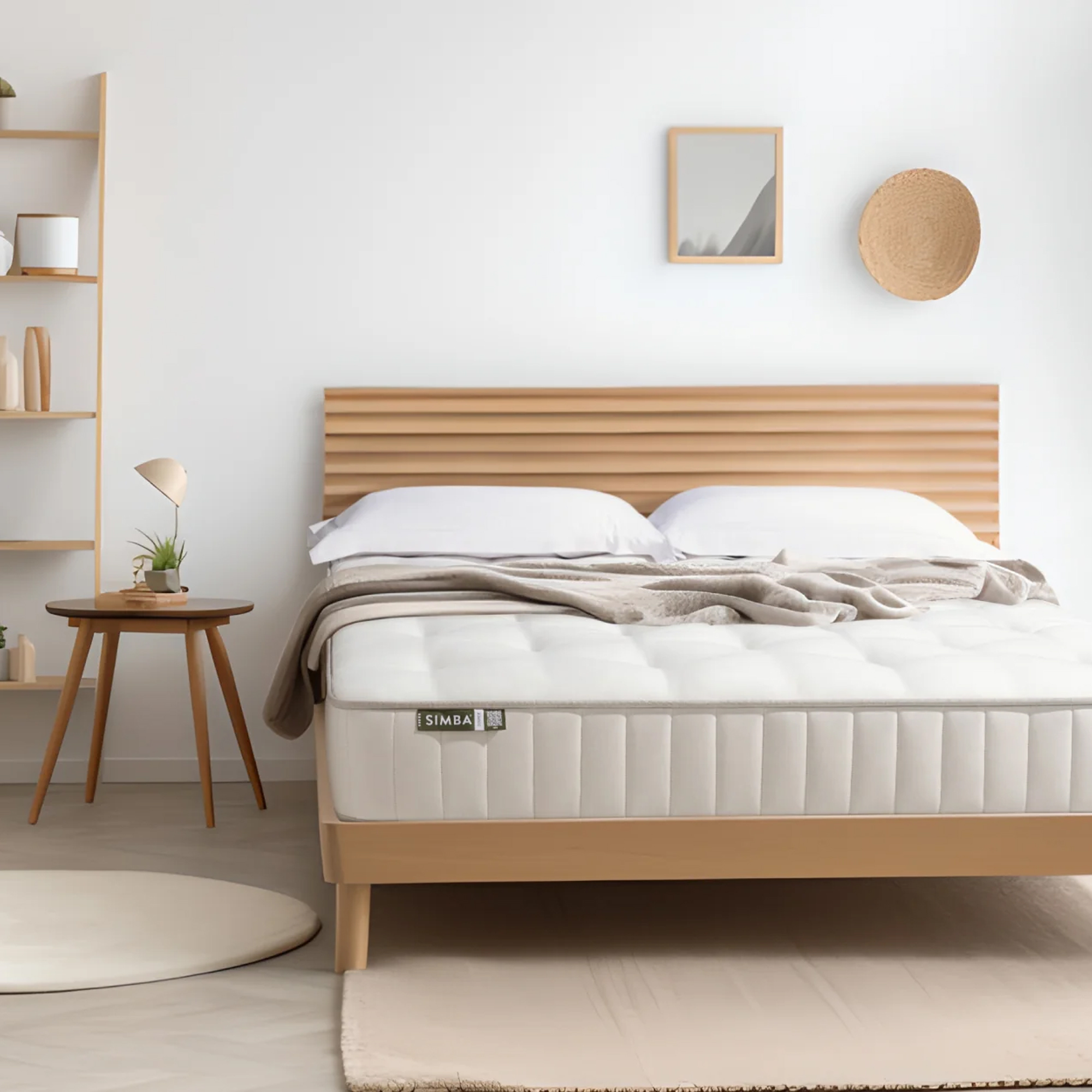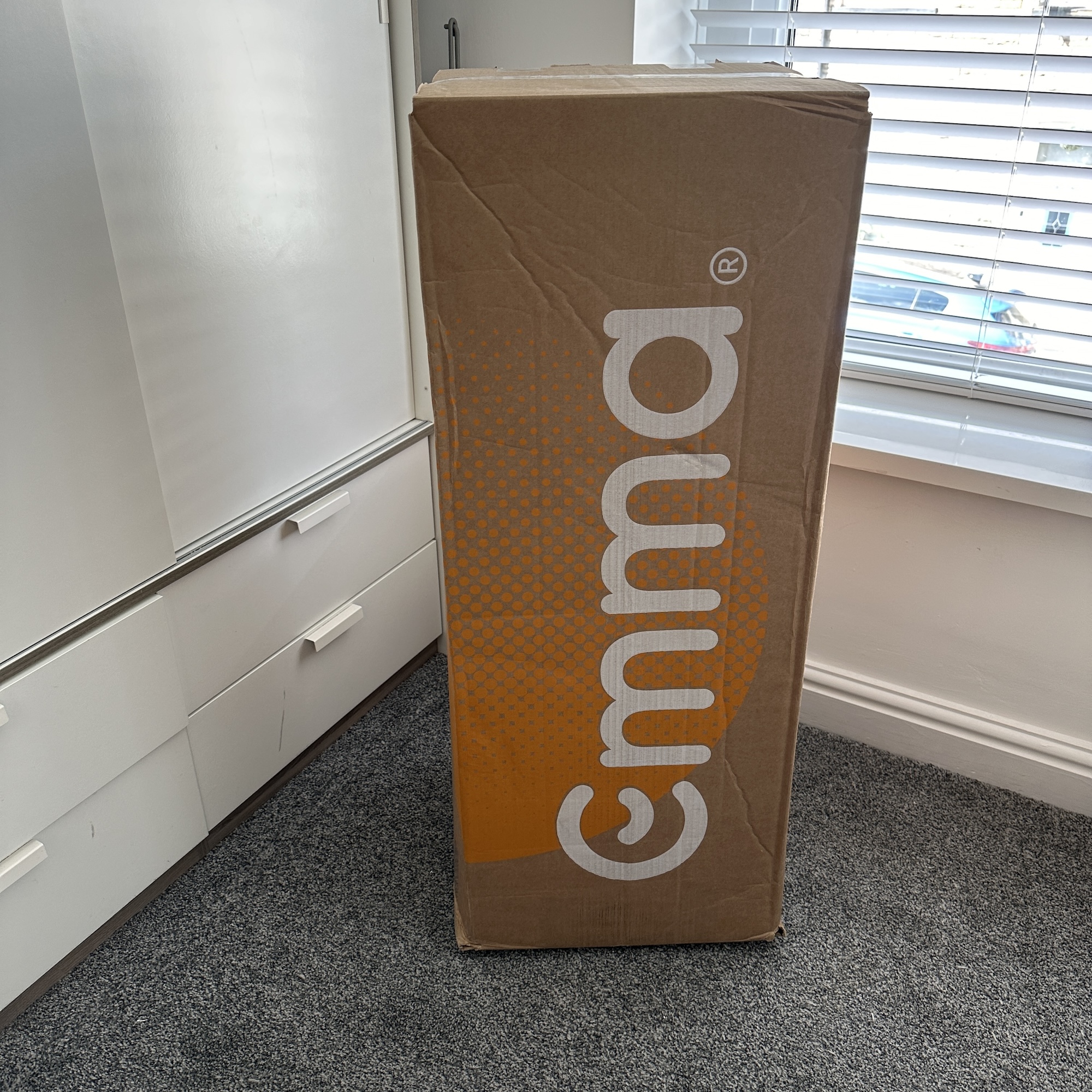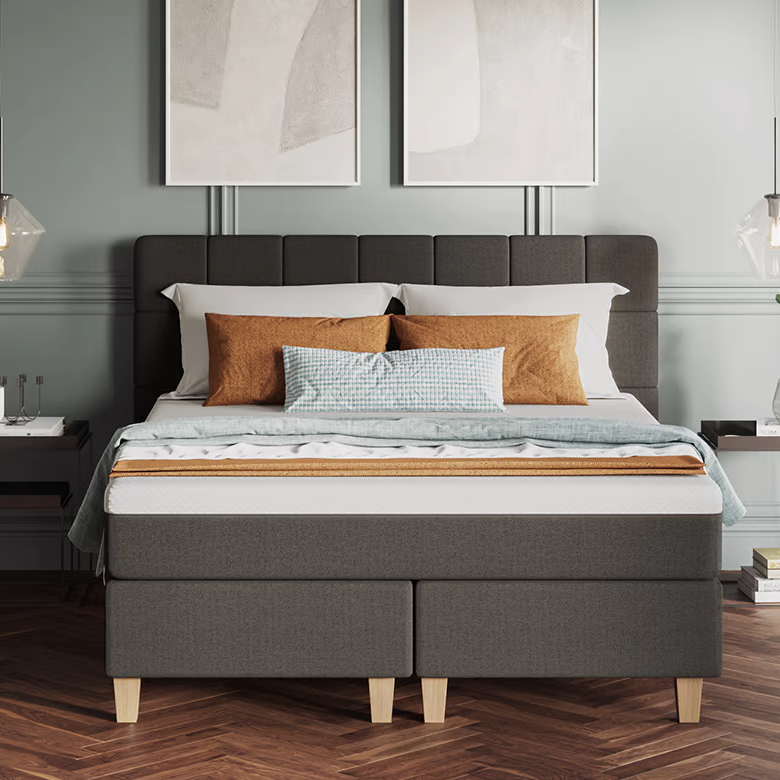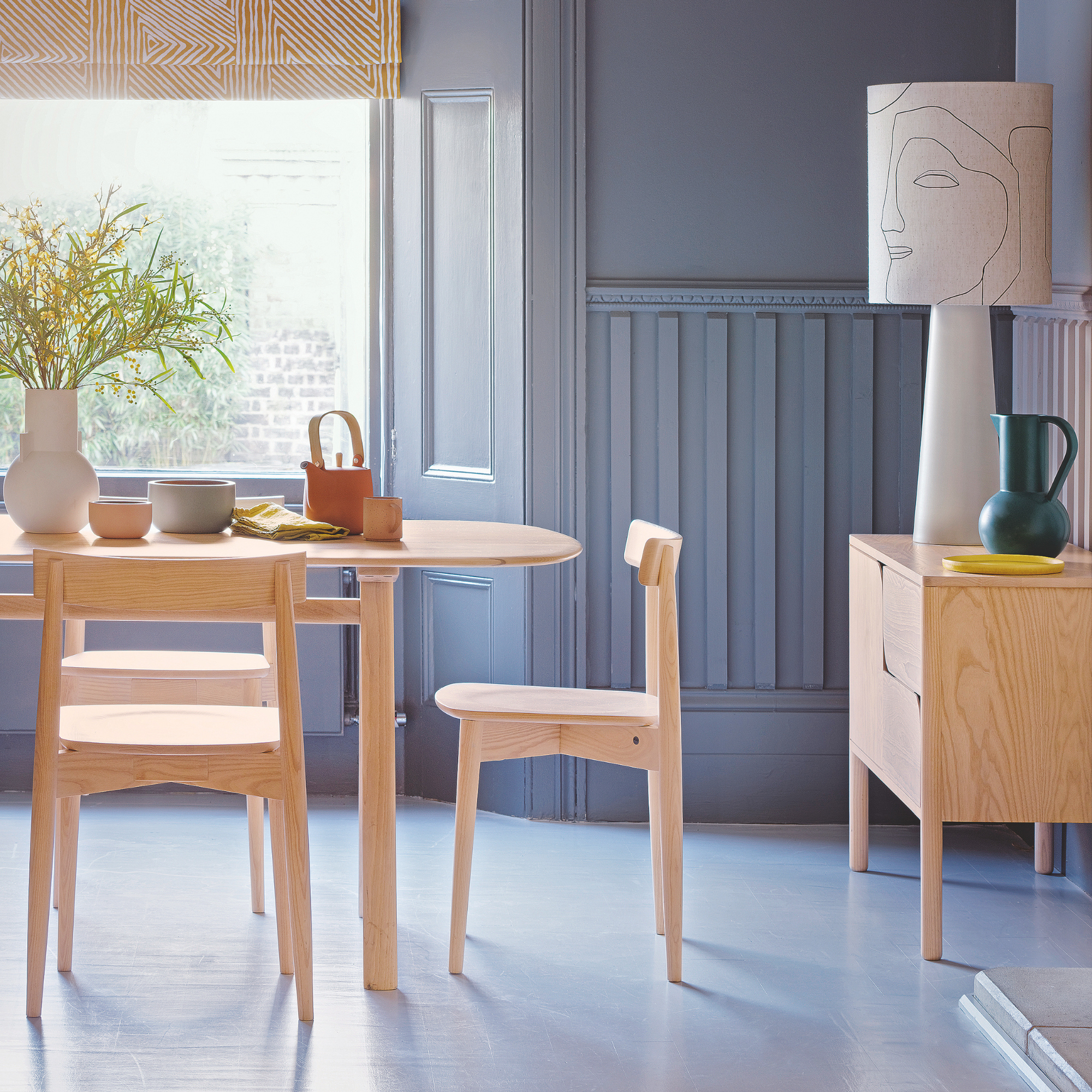Emma vs Simba – which mattress brand is the best choice for you
What is the difference between Emma and Simba, and which of these two bestselling mattress brands is the right choice for you? We compare the two brands side by side


Amy Lockwood
If you’ve been researching a new mattress lately, then you’ve likely come across the Emma vs Simba debate.
These brands are perhaps two of the best known names in the UK sleep market, at least if online searches are anything to go by. ‘Emma mattress’ averages a whopping 135,000 online searches per month, and ‘Simba mattress’ is a close second with 74,000 online searches per month.
Both brands also regularly feature in guides to the best mattress money can buy – including Ideal Home’s own guide. But which brand comes out on top in the Emma vs Simba battle? We dig into the nitty gritty to find out.
Emma vs Simba
On the face of it, these two sleep brands have a lot in common. Both are online only retailers, both offer mattress-in-a-box delivery, and both offer a choice of memory foam hybrid mattresses at a range of different price points. However, dig into the details and there are some key differences between the two retailers.
Mattress comparison
First, and probably most importantly, how do Emma mattresses rate against Simba mattresses. We’ve now reviewed multiple Emma and Simba mattresses at Ideal Home, and all have rated highly overall in Ideal Home's mattress testing process.
Both brands of mattresses regularly score highly with our reviewers in terms of comfort, support and motion isolation – all key ingredients for a good night’s sleep.
- Simba Hybrid Original: a great all-rounder 5 out of 5
- Simba Hybrid Pro: added breathability 4.5 out of 5
- Emma Luxe Cooling: Emma's coolest mattress 4.5 out of 5
- Emma NextGen Premium: affordable memory foam hybrid 4.5 out of 5
- Emma Original: affordable all-foam mattress 4 out of 5

Based on our testing experiences, what has historically tended to separate the two brand’s memory foam mattresses is temperature regulation and breathability.
Get the Ideal Home Newsletter
Sign up to our newsletter for style and decor inspiration, house makeovers, project advice and more.
Simba developed and has been using Simbatex® Foam within its mattresses for many years. This is an open-cell memory foam that's designed to let more air circulate through the memory foam’s dense structure. Thirty times more air compared to standard memory foam, in fact, according to the brand's findings. This memory foam is also infused with graphite, a material which is said to capture heat and draw it away from the body.
Our testers have all reported that Simba's technology seems to work to deliver a cooler sleep, finding the Simba mattresses we've tested far less prone to overheating than standard memory foam.

In contrast, a common niggle with Emma’s older memory foam mattresses was their tendency to sleep warm. Ideal Home asked several reviewers to test out the Emma Original mattress and the (now discontinued) Emma Premium mattress, and all reported that despite being super comfortable and cushioning, they tended to make our hot sleepers overheat during the night.
However, a few years ago Emma launched its Luxe Cooling mattress, and then the NextGen Cooling mattress, utilising graphite-infused memory foam to deliver better temperature regulation. According to our testers, it worked, with these mattresses now offering a far cooler sleeping experience than their predecessors.
As of writing, these two cooling Emma mattresses just remain slightly more expensive than Simba’s open-cell graphite-infused memory foam hybrid counterpart – the Simba Hybrid Original mattress – at full RRP. For instance, a double mattress in the graphite-infused 25cm deep Emma Luxe Cooling mattress is currently £1049, compared to £869 for the open-cell graphite-infused 25cm deep Simba Hybrid Original.

This said, Emma does run regular sales, and these mattress deals can see prices drop considerably.
But what if you’re not a fan of memory foam, either for breathability or sustainability reasons? Excitingly, Simba has recently introduced the Simba Earth mattress collection. This range vetoes non-biodegradable memory foam for more eco-friendly materials, including welded springs for easier recycling at the end of the mattress' lifespan, and comfort layers made from natural and biodegradable materials such as wool, hemp, and flax.
This is a really positive step forward from Simba, in particular because it acknowledges the huge problem that memory foam and synthetic mattresses can cause to the environment, especially if they end up in landfill. But more on this later.

Delivery comparison
It may not seem as important as how a mattress feels to sleep on, but a mattress is a heavy and bulky item, and for many of us, that means that the delivery process is a key part of the mattress buying puzzle.
Both Emma and Simba are known for their mattress-in-a-box delivery. Several years ago, this was something of an innovation, especially if you lived in an apartment block where access to your home was up several flights of stairs. Rather than negotiating getting a flat double or king-sized mattress up tricky stairwells or down awkward hallways, instead the brand’s mattresses were vacuum packed and rolled into a conveniently-sized, and far easier to manoeuvre, cardboard box.
Most of the brand’s ranges are still delivered this way. However, there is some discrepancy between the two brands in other parts of the delivery process.

As of writing, Simba offers free delivery of its mattresses to your front door or the room of your choice. For a £50 charge you can also have your old mattress removed and recycled at the same time, and for an additional £50 fee you can opt for VIP delivery whereby the team will ‘install your mattress or bed for immediate use and remove all packaging’.
In contrast, Emma does offer free delivery, but only to your doorstep, and unfortunately there’s no option to pay more for delivery to the room of your choice. That definitely isn't ideal for anyone who isn’t able-bodied enough to heft a mattress into their home by themselves, and means this retailer may not be the best choice for elderly, infirm, or disabled customers.
Emma also doesn’t offer to take your old mattress away when they deliver your new one. You can find out how to recycle a mattress independently, and there are lots of alternative ways to get rid of a mattress responsibly other than relying on the manufacturer delivering your new one. But, it's extra hassle that Simba solves on delivery day.
So, for ease of delivery and customer service options, we think Simba wins in this particular Emma vs Simba scenario.

Sleep trial comparison
Both Emma and Simba are online only retailers. That means that there are no bricks and mortar stores where you can go to and test out their mattresses in person. Instead, as of writing, both manufacturers offer sleep trials that let you test out a mattress within your own home, and then return it (even after it’s been slept on) if you find it isn’t the mattress for you.
You have to pay for the mattress first, and you need to make sure that you follow any terms and conditions that the retailer sets out, but, right now, both Emma and Simba allow you to change your mind within 200 nights of sleeping on their mattresses.
In a way, this is a plus point. In our many years of testing mattresses at Ideal Home we’ve discovered there’s a big difference between lying on a mattress in a showroom, and actually sleeping on it, night after night. For one thing, it’s very hard to test out breathability in a showroom. Instead you need to sleep on a mattress for a good few hours before you find out whether it’s prone to making you overheat. It can also take a few days to adjust to a mattress that has a different feel to your old one.
So sleep trials sound good, and in the Emma vs Simba battle, both brands are neck-and-neck in terms of the length of the trial they offer. The only problem is what happens to those mattresses that get returned. This leads onto our next comparison point, recycling and sustainability.

Sustainability comparison
In 2022 the National Bed Federation released a report that stated in the UK only 24% of all discarded mattresses were sent for recycling between 2014 and 2022. More worryingly, the ‘real’ rate of recycling (meaning majority of the mattress components were salvaged and repurposed) was only 14%.
According to the NBF that means ‘around 4.75 million mattresses every year end up in landfill or are incinerated in the UK, that’s equivalent to an area almost four times the size of the City of London and enough to fill Wembley Stadium twice or the Royal Albert Hall 22 times’.
The Simba website currently offers a lot more clarity on how the brand avoids contributing to mattress landfill than we could find on the Emma website. Plus, Simba has recently launched its Earth collection, which aims to put sustainability at the forefront of the agenda.
In fact, Simba now operates its own recycling initiative. For £50 you can book the collection of any mattress from your home via the Simba website. The brand and its partners will then recycle this mattress responsibly to ensure as many components are salvaged and repurposed as possible.

Customer satisfaction comparison
As of writing, Simba has over 50,000 reviews on Trustpilot, with an average rating of 4.5 out of 5 stars. 79% of reviewers gave the brand 5 stars, with customers raving about the comfort of the mattresses, the ease of setting it up from the box, and the speedy delivery service. 6% of reviewers rated the brand just 1 star.
In contrast, Emma has just under 50,000 reviews on Trustpilot and an average rating of 3 out of 5 stars. 64% of reviewers gave the brand 5 stars, but 20% of reviewers only gave the retailer 1 star, with complaints about poor communication and poor customer service being the main theme.
Verdict
So, all things considered, which brand should you opt for in the Emma vs Simba debate?
Well, if affordability is a key criteria in your search then, as of writing, Emma offers mattresses at a lower price point than Simba. Simba's lowest priced double mattress – the Simba Hybrid Essential – currently costs £759 at full RRP. In comparison, Emma offers the more affordable Emma Original mattress which retails at £499 for the double, although it's worth pointing out that this is an all-foam mattress so it doesn't have springs like the Simba Hybrid Essential. Emma's entry-level hybrid mattress is also cheaper, at £659 for the double.
However, these two affordable mattresses don't make any mention of utilising the temperature-regulating graphite-infused memory foam that Emma's own higher-priced mattresses, and all of Simba's mattresses offer. So if breathability and a cooler night's sleep is important to you, investing a little more for a hybrid mattress with cooling technologies could be well worth it.

And, if you don't want to get all hot and bothered before you even get the mattress onto the bed, Simba is currently the only brand to offer delivery to the room of your choice. If you opt for an Emma mattress, the delivery team will only get the mattress as far as your doorstep and the rest is down to you.
If you're concerned about sustainability and want to invest in a mattress that either utilises natural materials, or helps consumers to recycle their mattress responsibly at the end of its lifespan, then Simba also comes up trumps here. The brand is investing in greener biodegradable and recyclable materials in its new Earth mattress range, and offers customers the ability to recycle not only Simba's own mattresses, but any mattress, at the end of its life.
Ultimately, whether you opt for an Emma mattress or a Simba mattress comes down to personal preference and personal circumstances. Both brands offer decent mattresses, in our opinion there are just some key differences in construction, price points, the delivery service, and their approaches to environmental considerations.
Simba mattress range
All prices are correct as of writing, and reflect the full recommended retail price for a double mattress.
- Simba Hybrid Essential | £759 | 20cm : micro springs and open-cell graphite-infused memory foam
- Simba Hybrid Inter | £799 | 23cm : micro springs and open-cell graphite-infused memory foam
- Simba Hybrid Original | £869 | 25cm : micro springs and open-cell graphite-infused memory foam
- Simba Hybrid Pro | £1279 | 28cm : double layer springs, open-cell graphite-infused memory foam, wool
- Simba Hybrid Luxe | £1729 | 31cm : triple layer springs, open-cell graphite-infused memory foam, wool and bamboo
- Simba Hybrid Ultra | £2929 | 34cm : triple layer springs, open-cell graphite-infused memory foam, kapok, wool and bamboo
- Simba Earth Source | £1329 | 25cm : double spring layer, wool, hemp and flax
- Simba Earth Escape | £1699 | 28cm : triple spring layer, wool, hemp, and flax
- Simba Earth Apex | £2199 | 30cm : triple spring layer, cashmere, mohair, wool, hemp, and flax
Emma mattress range
All prices are correct as of writing, and reflect the full recommended retail price for a double mattress.
- Emma Original | £499 | 25cm : all-foam with memory foam top layer
- Emma NextGen Premium | £659 | 25cm : pocket spring and memory foam
- Emma Luxe Cooling | £1049 | 25cm : pocket spring and graphite-infused memory foam
- Emma NextGen Cooling | £1139 | 27cm : pocket spring and graphite-infused memory foam
- Emma Elite mattress | £1489 | 27cm : pocket spring and AirGrid
Hopefully this has helped you to determine some of the differences between an Emma and a Simba mattress, and will help you to decide which is the right choice for you.

Katie has been writing freelance since early 2022, specialising in all things homes and gardens, following achieving a Masters in Media and Journalism. She started out writing e-commerce content for several of Future’s interior titles, including Real Homes, Gardeningetc, Livingetc, and Homes and Gardens. Since then she’s been a regular contributor on Ideal Home’s digital team, covering news topics, how-to guides, and product reviews.
- Amy LockwoodSleep Editor
-
 Blueberry is the ‘it’ blue this spring - but these are the 3 colours you should never pair with it, according to experts
Blueberry is the ‘it’ blue this spring - but these are the 3 colours you should never pair with it, according to expertsAvoid overpowering your space by avoiding these three bold colours
By Kezia Reynolds
-
 How to fix a leaky gutter – expert advice on what you'll need to get your gutters working properly again
How to fix a leaky gutter – expert advice on what you'll need to get your gutters working properly again7 steps to stop water dripping from your gutters
By Katie Sims
-
 Amanda Holden's maximalist guest bedroom uses a smart decorating trick to make it look bigger
Amanda Holden's maximalist guest bedroom uses a smart decorating trick to make it look biggerInterior experts say it's a masterclass in how to decorate a dormer bedroom
By Amy Lockwood